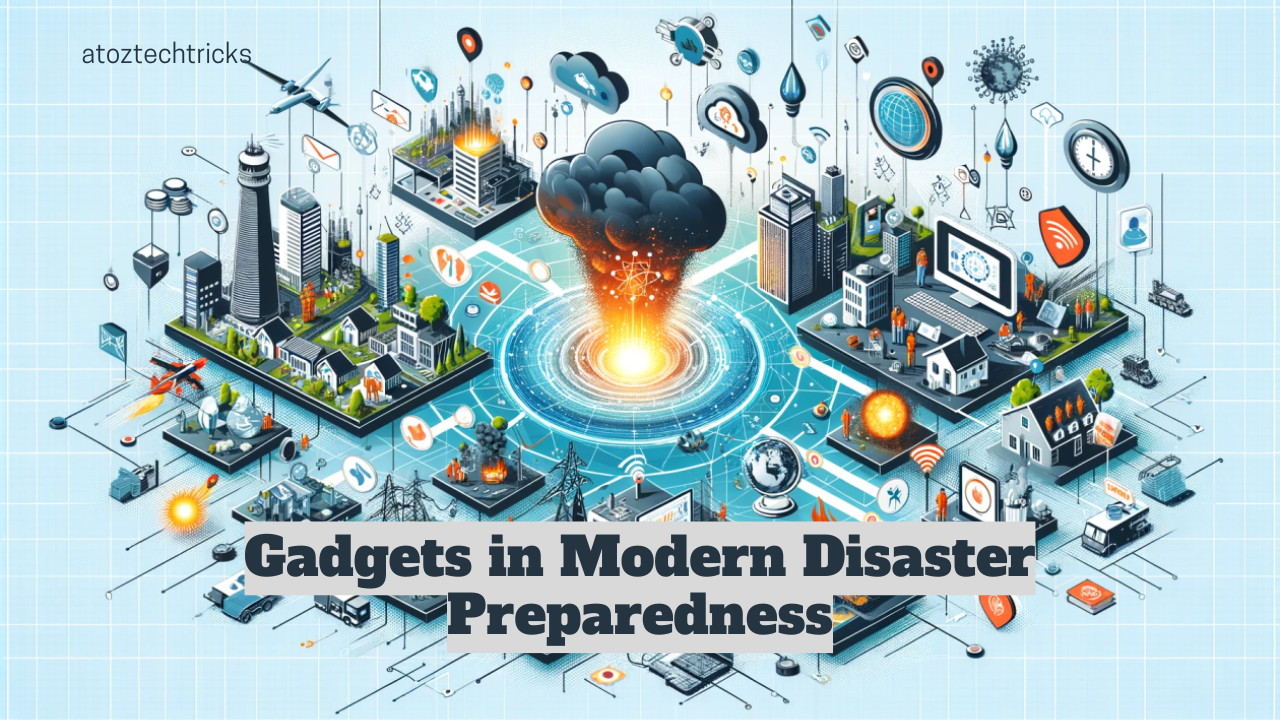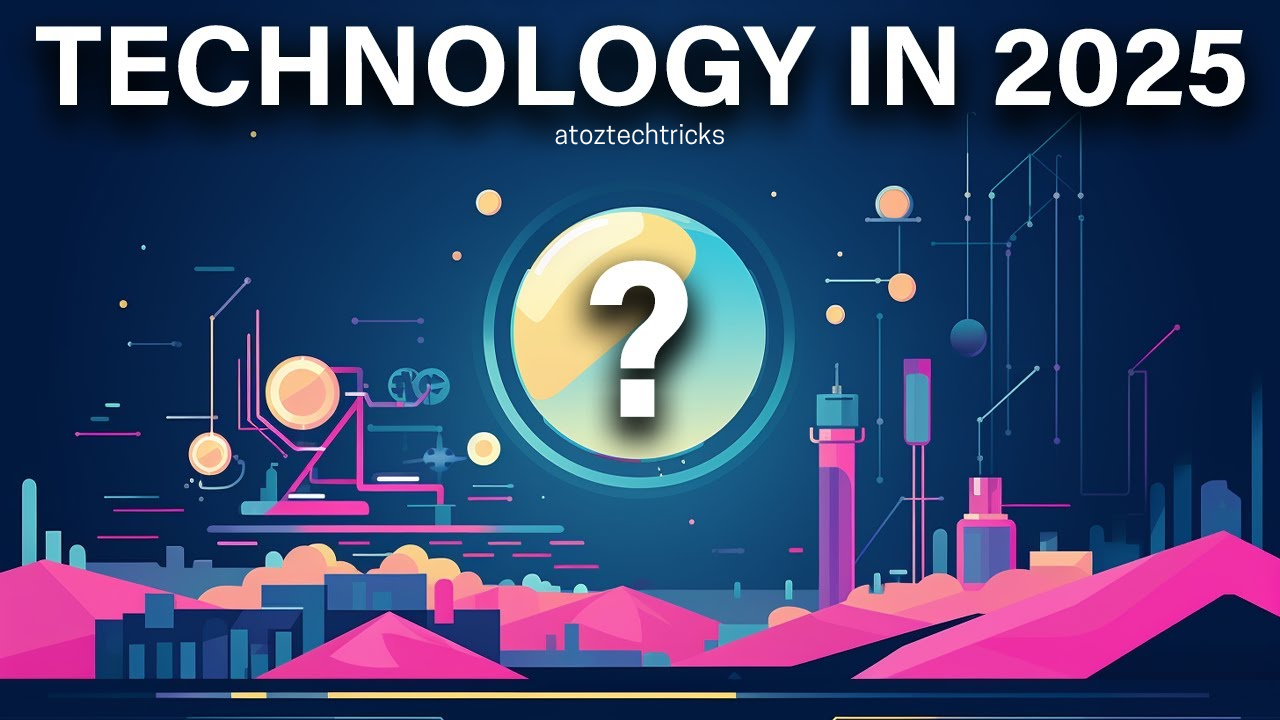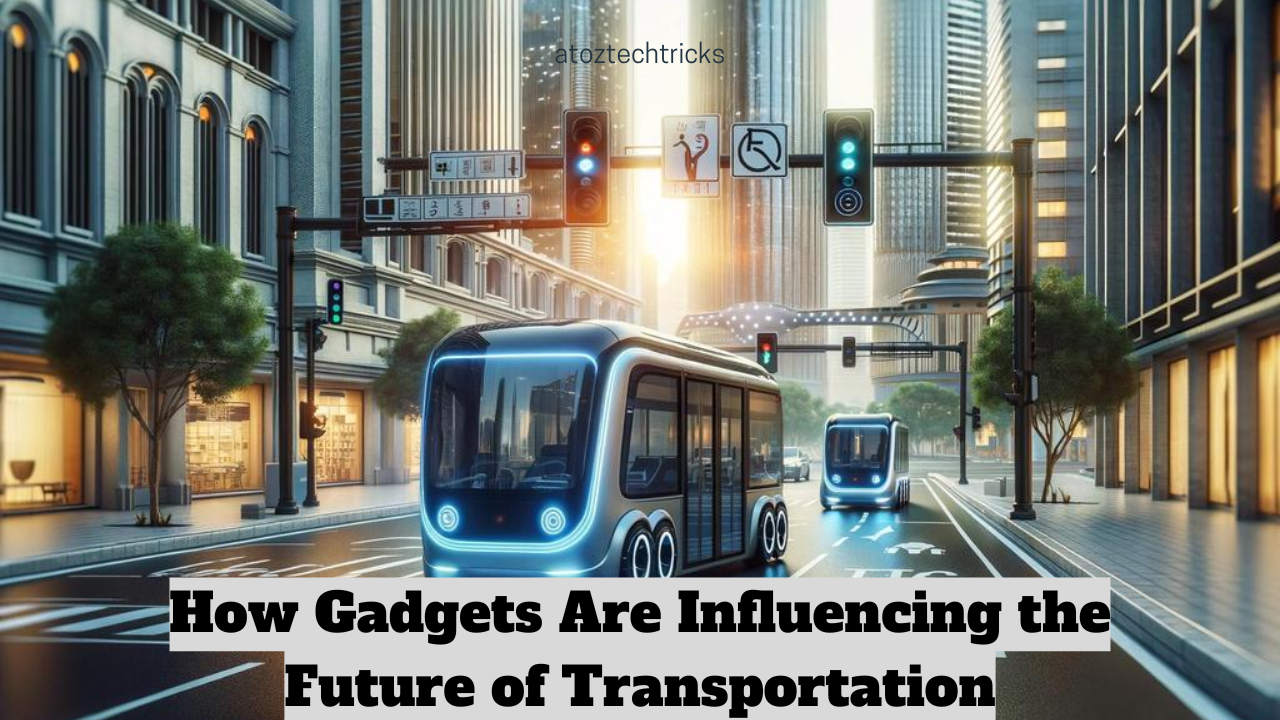In a world increasingly vulnerable to natural and man-made disasters, the importance of disaster preparedness cannot be overstated. With climate change intensifying the frequency and severity of events such as hurricanes, wildfires, and floods, and geopolitical tensions leading to potential threats of war and terrorism, the need for effective disaster preparedness has never been greater. Modern gadgets and technology play a pivotal role in this preparedness, offering tools and solutions that can save lives, mitigate damage, and facilitate recovery. This article explores the role of gadgets in modern disaster preparedness, covering essential devices, technological advancements, and how they integrate into broader emergency management strategies.
1. The Evolution of Disaster Preparedness: From Basics to High-Tech
Historically, disaster preparedness relied heavily on basic measures such as stockpiling food, water, and medical supplies. While these fundamentals remain crucial, the advent of technology has transformed the way individuals and communities prepare for and respond to disasters. The transition from simple readiness to sophisticated, gadget-driven preparedness reflects the broader technological advancements of the 21st century.
1.1 The Shift from Traditional to Technological Preparedness
In the past, disaster preparedness was largely manual, with emphasis on human response and community resilience. The introduction of technology into disaster preparedness began with early warning systems, like weather radios, which provided critical information about impending disasters. Over time, this has evolved into a complex ecosystem of gadgets and systems that offer real-time data, automated alerts, and advanced communication tools. These advancements have made it possible to anticipate disasters more accurately, respond more swiftly, and recover more effectively.
1.2 Integration of Gadgets in Disaster Management
Today, gadgets are integral to disaster management across all phases: mitigation, preparedness, response, and recovery. They enable authorities and individuals to monitor risks, plan evacuation routes, maintain communication, and provide aid. For example, the use of drones for aerial surveillance during floods or wildfires offers real-time visuals that are crucial for directing resources and personnel effectively. Similarly, smartphones equipped with emergency apps can alert users to nearby dangers and provide step-by-step instructions on what to do during a crisis.
2. Key Gadgets in Modern Disaster Preparedness
Modern disaster preparedness relies on a variety of gadgets, each serving a specific purpose within the broader framework of emergency management. These gadgets range from communication devices and early warning systems to survival tools and recovery aids.
2.1 Communication Devices
Effective communication is the cornerstone of disaster preparedness and response. During a disaster, traditional communication channels often fail due to infrastructure damage, making alternative communication gadgets essential.
- Satellite Phones: Unlike regular mobile phones, satellite phones do not rely on terrestrial cell towers and can function in remote areas and during infrastructure failures. They are a reliable communication tool during disasters, ensuring that individuals and emergency responders can stay connected even when conventional networks are down.
- Two-Way Radios: Two-way radios, or walkie-talkies, are another crucial communication tool, particularly in areas where mobile networks are unreliable. They are widely used by emergency personnel and can be vital gadgets for families and communities during disasters.
- Emergency Radios: These devices are designed to receive critical broadcasts from emergency services. Many models are equipped with hand-crank generators and solar panels, ensuring they remain operational even when power sources are scarce. They can receive weather alerts, evacuation notices, and other critical information during a disaster.
2.2 Early Warning Systems
Early warning systems are perhaps the most vital aspect of disaster preparedness, providing the lead time necessary to implement protective measures and evacuate if necessary.
- Smartphone Apps: Many smartphone apps provide real-time alerts for various types of disasters, including earthquakes, hurricanes, and floods. These apps often use data from government agencies and weather services to provide accurate and timely information. Some of the most popular apps include FEMA, Red Cross, and WeatherBug.
- Personal Weather Stations: Personal weather stations allow individuals to monitor local weather conditions in real time. These gadgets can provide early warnings of severe weather conditions, enabling people to take precautionary measures before official alerts are issued.
- Seismic Sensors: For areas prone to earthquakes, seismic sensors are invaluable. These devices can detect the earliest signs of seismic activity, providing critical seconds or minutes of warning. Advanced seismic sensors are often integrated into larger networks that provide comprehensive earthquake warnings.
2.3 Survival Gadgets
Survival gadgets are designed to ensure that individuals can sustain themselves in the aftermath of a disaster, when access to food, water, and shelter may be compromised.
- Portable Water Purifiers: Access to clean drinking water is often one of the first casualties of a disaster. Portable water purifiers, such as LifeStraw or Sawyer filters, are lightweight, easy to use, and capable of removing bacteria, parasites, and other contaminants from water sources.
- Solar Chargers: Power outages are common during disasters, making solar chargers an essential gadget for keeping phones, radios, and other critical devices operational. Modern solar chargers are compact and efficient, capable of charging multiple devices simultaneously.
- Multi-Tools: A multi-tool is a versatile gadget that combines several tools into one, such as knives, pliers, screwdrivers, and can openers. These tools are invaluable in survival situations, allowing individuals to perform a wide range of tasks necessary for sustenance and shelter.
- Portable Generators: In prolonged disaster scenarios, where power outages may last days or even weeks, portable generators can provide much-needed electricity for essential devices. Modern generators are often designed to be fuel-efficient and quiet, with some models capable of running on renewable energy sources.
2.4 Drones and Robotics
Drones and robotics have emerged as powerful tools in disaster preparedness and response, offering capabilities that were previously unimaginable.
- Drones for Surveillance and Delivery: Drones equipped with cameras and sensors can be used to survey disaster areas, assess damage, and locate survivors. They are particularly useful in hard-to-reach areas, such as flooded regions or collapsed buildings. In addition, drones are increasingly being used to deliver supplies, such as food, water, and medical kits, to areas cut off from traditional delivery methods.
- Rescue Robots: Rescue robots are designed to navigate through debris and search for survivors in collapsed buildings or other hazardous environments. These robots can be equipped with cameras, microphones, and other sensors to detect signs of life, significantly improving the chances of successful rescues.
3. The Role of Gadgets in Enhancing Community Preparedness
While individual preparedness is critical, community preparedness is equally important in managing disasters effectively. Gadgets and technology play a crucial role in fostering a community-wide approach to disaster readiness.
3.1 Community Alert Systems
Community alert systems are designed to notify large groups of people about impending disasters, ensuring that everyone in the community receives timely information and can take appropriate action.
- Emergency Sirens: Traditional emergency sirens remain an effective way to alert entire communities to imminent danger. Modern siren systems are often integrated with digital communication networks, allowing for automated activation based on real-time data from weather stations or seismic sensors.
- Mass Notification Systems: These systems use a combination of text messages, emails, phone calls, and social media alerts to disseminate emergency information to the public. They are often used by government agencies and large organizations to coordinate evacuation efforts and provide updates during ongoing disasters.
3.2 Community Resource Management
Effective disaster preparedness requires efficient management of resources, both during and after a disaster. Gadgets and technology can facilitate this process by optimizing the distribution of resources and coordinating community efforts.
- Inventory Management Systems: Digital inventory management systems can help communities track and distribute resources such as food, water, medical supplies, and shelter materials. These systems can be particularly useful in large-scale disasters, where resource management is critical to ensuring that aid reaches those who need it most.
- Crowdsourcing Platforms: Crowdsourcing platforms, such as community apps or online forums, can be used to coordinate volunteer efforts, share information, and identify resource needs. These platforms allow community members to collaborate effectively and provide mutual support during disasters.
4. Challenges and Considerations in the Use of Gadgets for Disaster Preparedness
While gadgets offer significant advantages in disaster preparedness, their use is not without challenges. It is essential to consider potential limitations and risks to ensure that these tools are used effectively.
4.1 Accessibility and Affordability
One of the primary challenges in the widespread adoption of disaster preparedness gadgets is accessibility and affordability. High-tech gadgets can be expensive, making them inaccessible to low-income communities or individuals in developing countries. This disparity can exacerbate existing inequalities in disaster preparedness and response.
4.2 Dependency on Technology
As gadgets become more integrated into disaster preparedness, there is a risk of over-reliance on technology. In the event of a widespread power outage or failure of communication networks, individuals and communities may find themselves without access to critical tools and information. It is essential to maintain a balance between technological and traditional preparedness measures to ensure resilience in the face of technology failures.
4.3 Cybersecurity Risks
The increasing use of digital gadgets and networks in disaster preparedness introduces new vulnerabilities, particularly related to cybersecurity. Hackers could potentially disrupt early warning systems, manipulate data, or interfere with communication networks, leading to catastrophic consequences. Ensuring robust cybersecurity measures is crucial to safeguarding the integrity of disaster preparedness systems.
4.4 Maintenance and Upkeep
Many disaster preparedness gadgets require regular maintenance and updates to remain functional. For example, batteries in emergency radios or satellite phones need to be checked and replaced periodically. Drones and robots require software updates and hardware maintenance. Failure to maintain these gadgets can render them ineffective when they are needed most.
5. Future Trends in Disaster Preparedness Gadgets
As technology continues to advance, the future of disaster preparedness gadgets looks promising. Several emerging trends are set to further enhance the effectiveness of these tools in disaster scenarios.
5.1 Integration of Artificial Intelligence
Artificial Intelligence (AI) is poised to revolutionize disaster preparedness. AI can analyze vast amounts of data in real time, improving the accuracy of disaster predictions and enabling more effective response strategies. For example, AI algorithms can predict the path of hurricanes, identify areas most at risk of flooding, and optimize the deployment of emergency resources.
5.2 Advanced Wearable Technology
Wearable gadgets are becoming increasingly sophisticated, with potential applications in disaster preparedness. Smartwatches and fitness trackers equipped with health monitoring sensors can provide real-time data on an individual’s vital signs, which can be crucial during a disaster. Future wearables could include features such as GPS tracking, emergency alerts, and communication capabilities, making them valuable tools for both individuals and emergency responders.
5.3 Enhanced Connectivity with 5G
The rollout of 5G technology is expected to significantly enhance connectivity, enabling faster and more reliable communication during disasters. 5G networks will support the real-time transmission of data from drones, sensors, and other gadgets, improving situational awareness and facilitating more effective response efforts.
5.4 Smart Infrastructure
Smart infrastructure, including buildings and transportation systems equipped with sensors and automated controls, is another emerging trend in disaster preparedness. These systems can detect structural damage, monitor environmental conditions, and automatically adjust to mitigate risks. For example, smart buildings could automatically shut off gas lines in the event of an earthquake or adjust lighting and ventilation systems during a power outage.

The role of gadgets in modern disaster preparedness is undeniably significant, offering a wide range of tools that enhance the ability to anticipate, respond to, and recover from disasters. From communication devices and early warning systems to survival gadgets and advanced robotics, technology has transformed the landscape of disaster preparedness, making it possible to save lives, protect property, and ensure more resilient communities. However, it is essential to address the challenges associated with the use of these gadgets, including issues of accessibility, dependency, and cybersecurity. By embracing technological advancements while maintaining a balanced approach, individuals and communities can be better equipped to face the growing threats of the 21st century. As we look to the future, continued innovation and investment in disaster preparedness gadgets will be crucial in building a safer and more resilient world.





